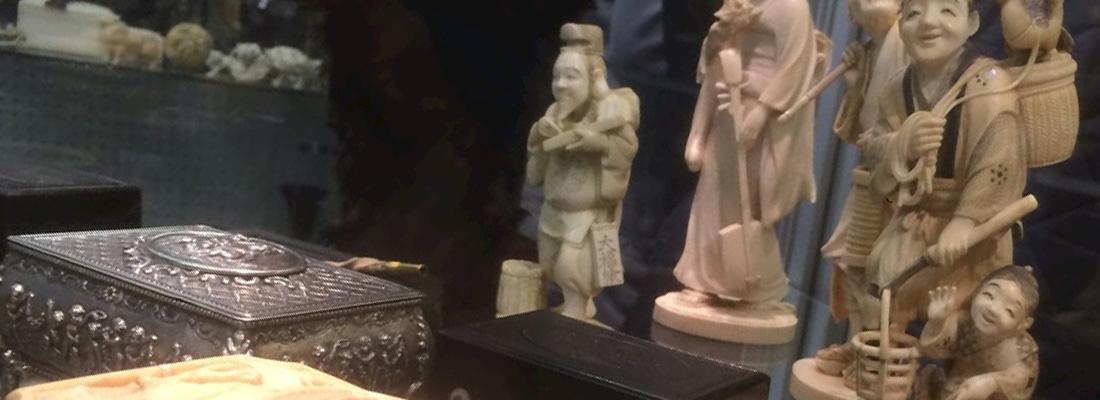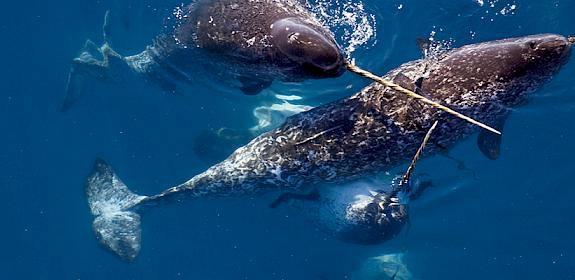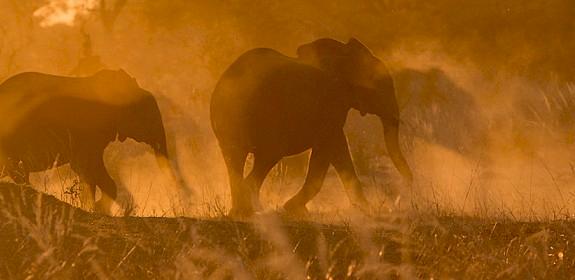New study assesses the US physical ivory market
Washington DC, USA, 14 October 2016—A rapid assessment by TRAFFIC of selected domestic ivory markets in the U.S. finds that state bans appear to be having an impact on reducing the open availability of elephant ivory in formerly significant urban markets.
Researchers assessed the availability, quantity and price of elephant ivory items in six major U.S. metropolitan areas during May-July of this year and found a total of 1,589 ivory items offered for sale by 227 vendors, an average of seven per outlet.
This survey was carried out around the introduction, on July 6, 2016, of U.S. Federal regulations amounting to a “near-total ban” on imports, exports, and domestic trade of African elephant ivory. Under these new regulations, sellers now assume the burden of proving that their ivory item qualifies for a specific exemption.
The findings were released hot on the heels of the Convention on International Trade in Endangered Species of Wild Fauna and Flora (CITES) meeting that ended this month in Johannesburg, South Africa, where world governments were called upon to phase out domestic ivory markets.
While physical market availability in the US appears to be declining in the face of strong regulatory and public awareness measures by the government to ban the elephant ivory trade, vendors generally lack a clear understanding of the new Federal and State laws regulating the commercial sale of elephant ivory
Rachel Kramer, Senior Program Officer for TRAFFIC US
“The United States Fish and Wildlife Service (USFWS) could help to enhance an understanding of current regulations amongst buyers and sellers through further targeted outreach, to lessen this confusion.”
The report notes the possibility that some vendors may be tempted illegally to move ivory interstate to States with weaker legislation towards commercial ivory sales—a situation that would challenge the significant strides made at the Federal level and by some States to address illegal ivory sales. However, over time the new regulations may have a dampening effect on demand and availability that could reduce the market substantially, to perhaps even negligible levels.
“This rapid assessment establishes a benchmark against which the effectiveness of the new US Federal regulations can be measured through ongoing and regular market monitoring,” said Kramer.
Notes:
Locations visited for this market snapshot included Boston, the greater Los Angeles area, New York City, Portland, San Francisco, and the greater Washington, DC area. Some have state-level legislation in place to regulate commercial sales, while others do not. Researchers found a total of 1,589 ivory items offered for sale by 227 vendors. With certain outliers under investigation by law enforcement at the time of the analysis, vendors selling elephant ivory had an average of 7 items for sale. The greater Washington, DC area was found to have the highest number of observed elephant ivory items (68 vendors with 658 items), followed by Portland, OR (37 vendors with 254 items), New York City, NY (41 vendors with 224 items), Boston, MA (22 vendors with 188 items), the greater Los Angeles area, CA (42 vendors with 177 items), and San Francisco, CA (17 vendors with 88 items).
A rapid assessment of U.S. physical ivory markets (PDF, 500 KB) is part of a substantive report on the U.S. ivory market that will be published by TRAFFIC, funded by WWF and IFAW in 2016.





